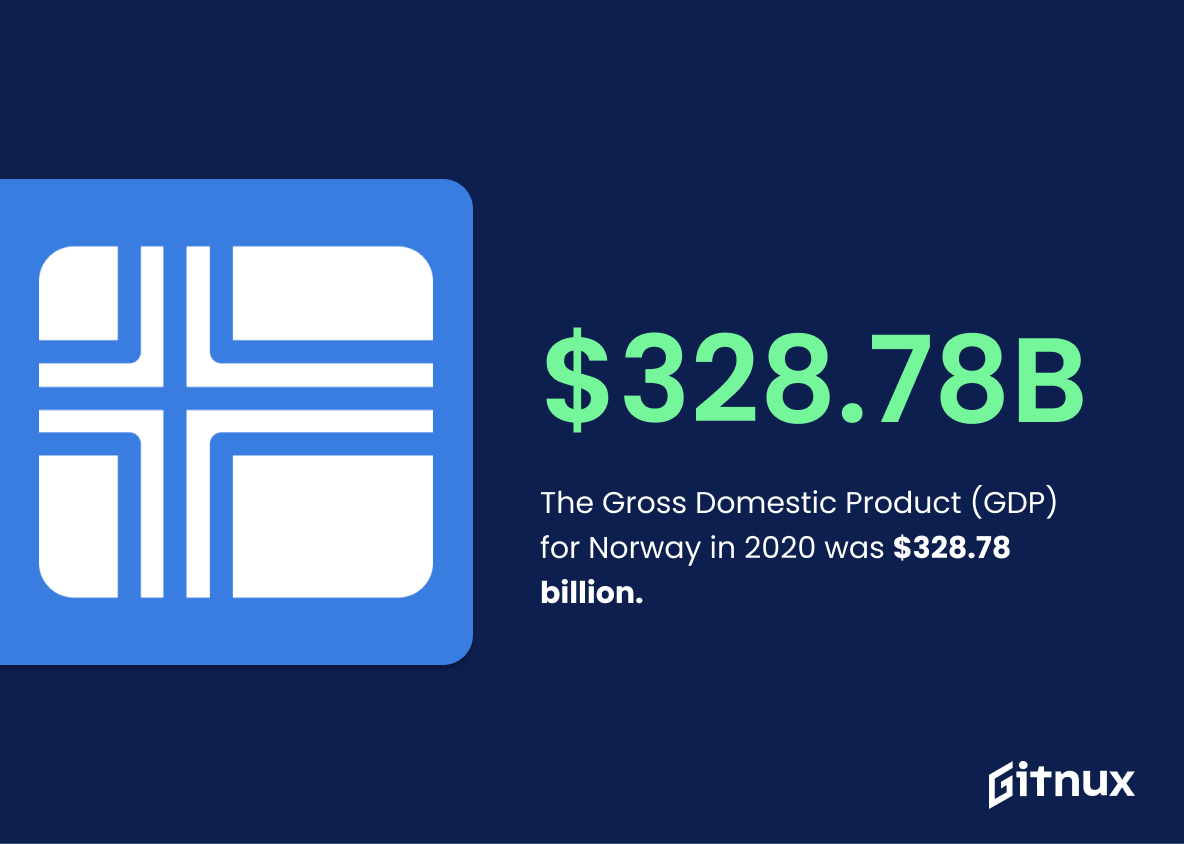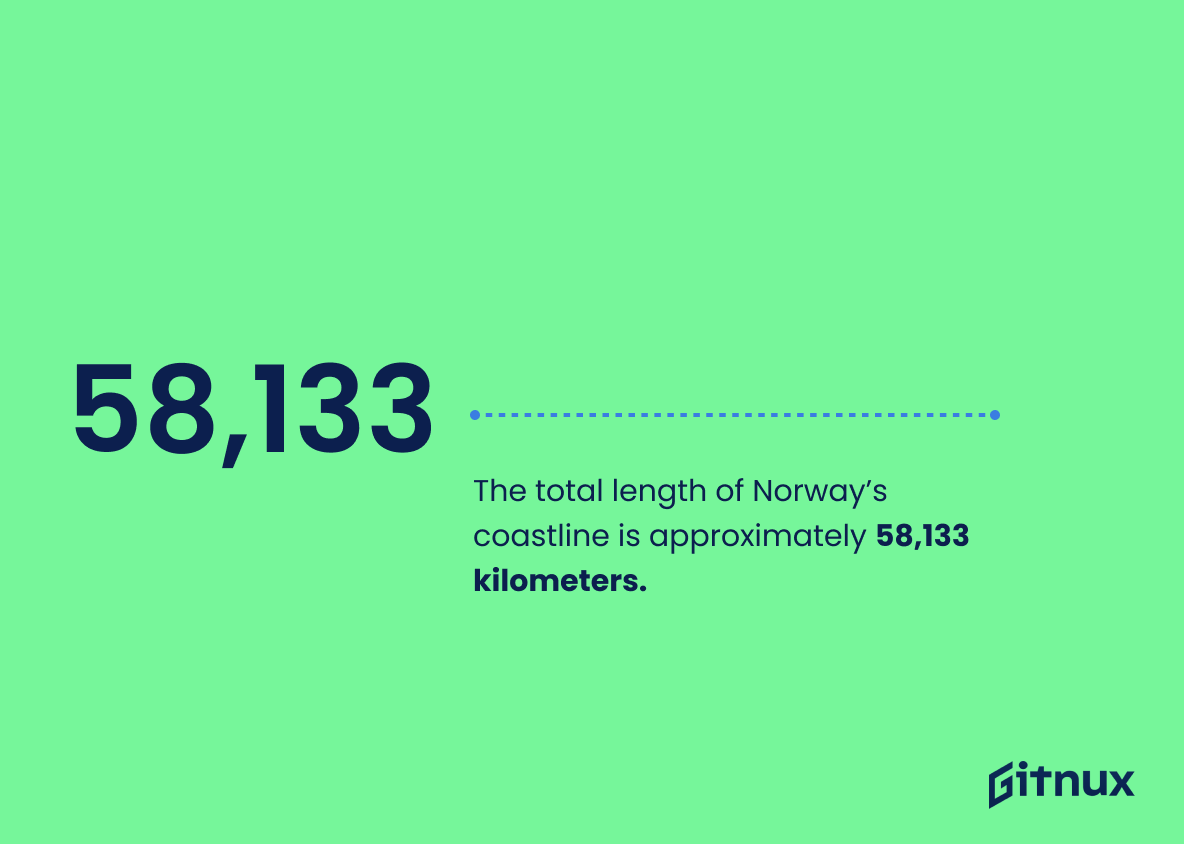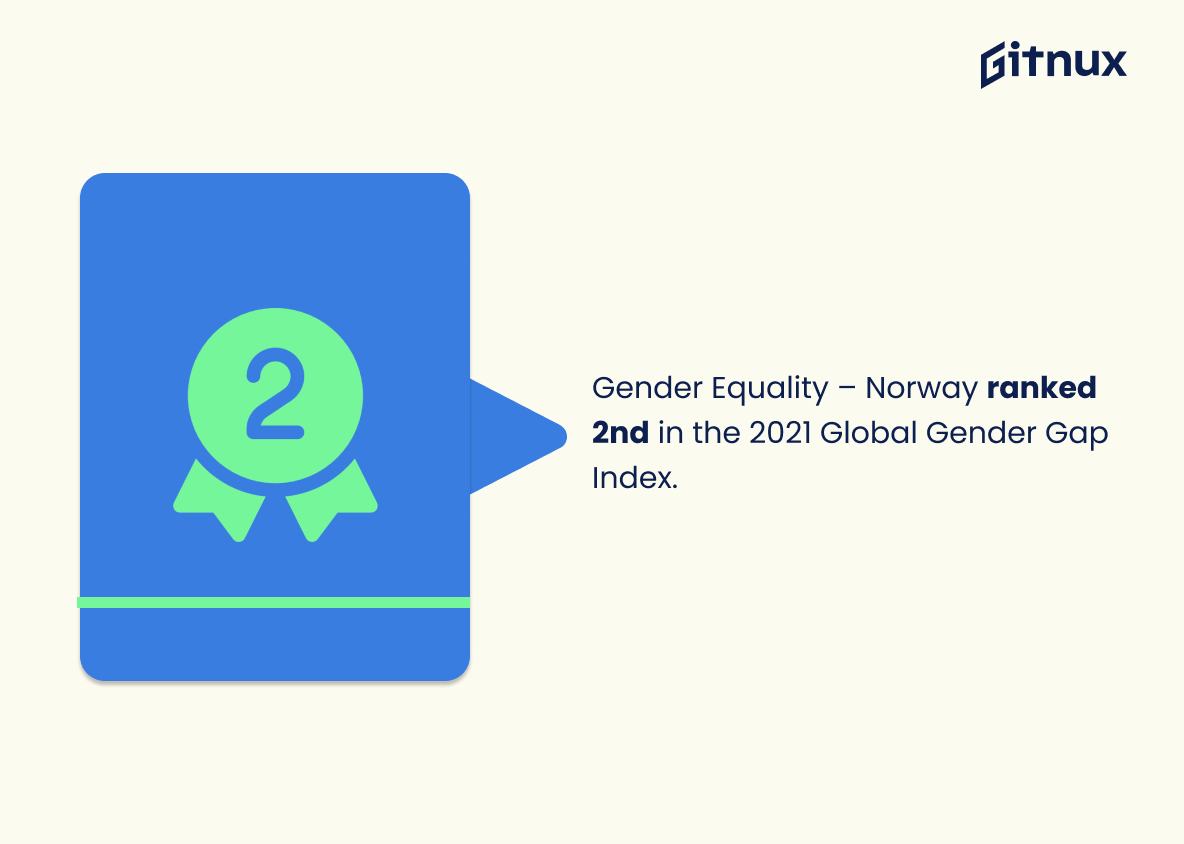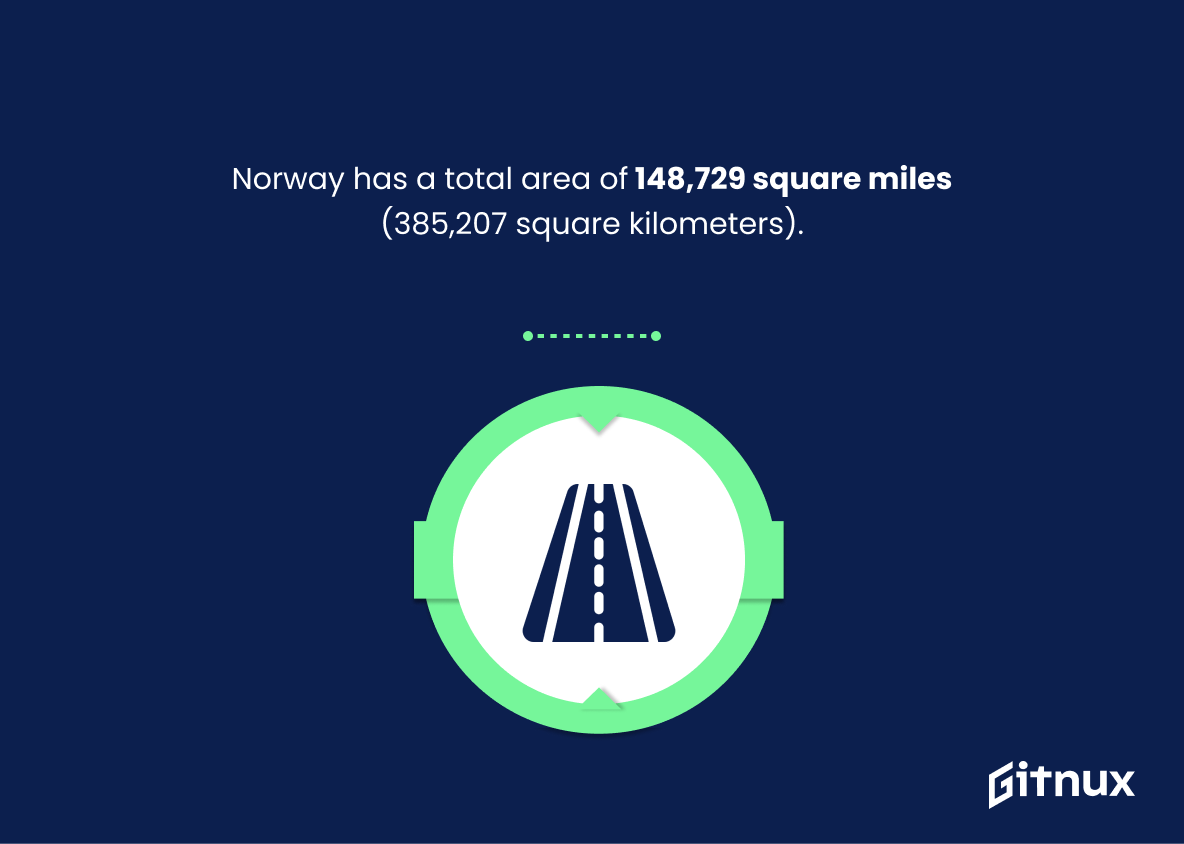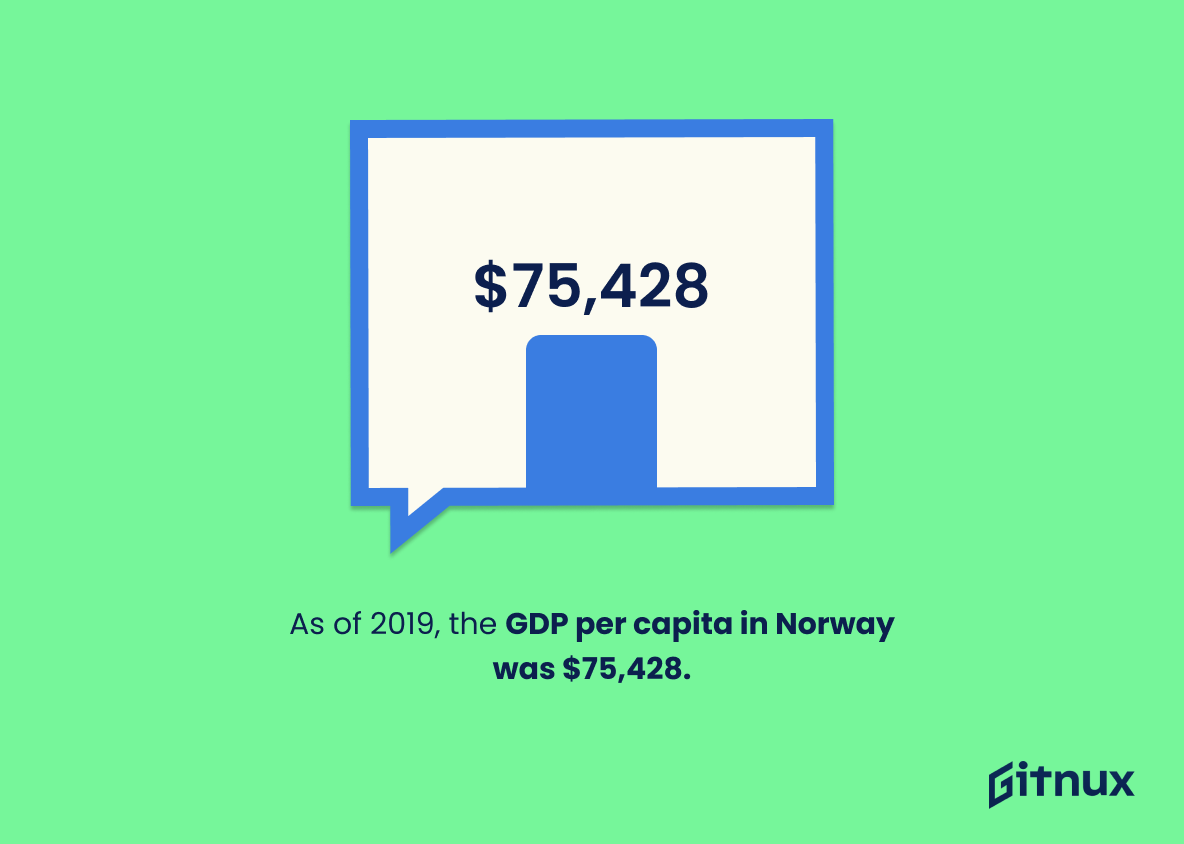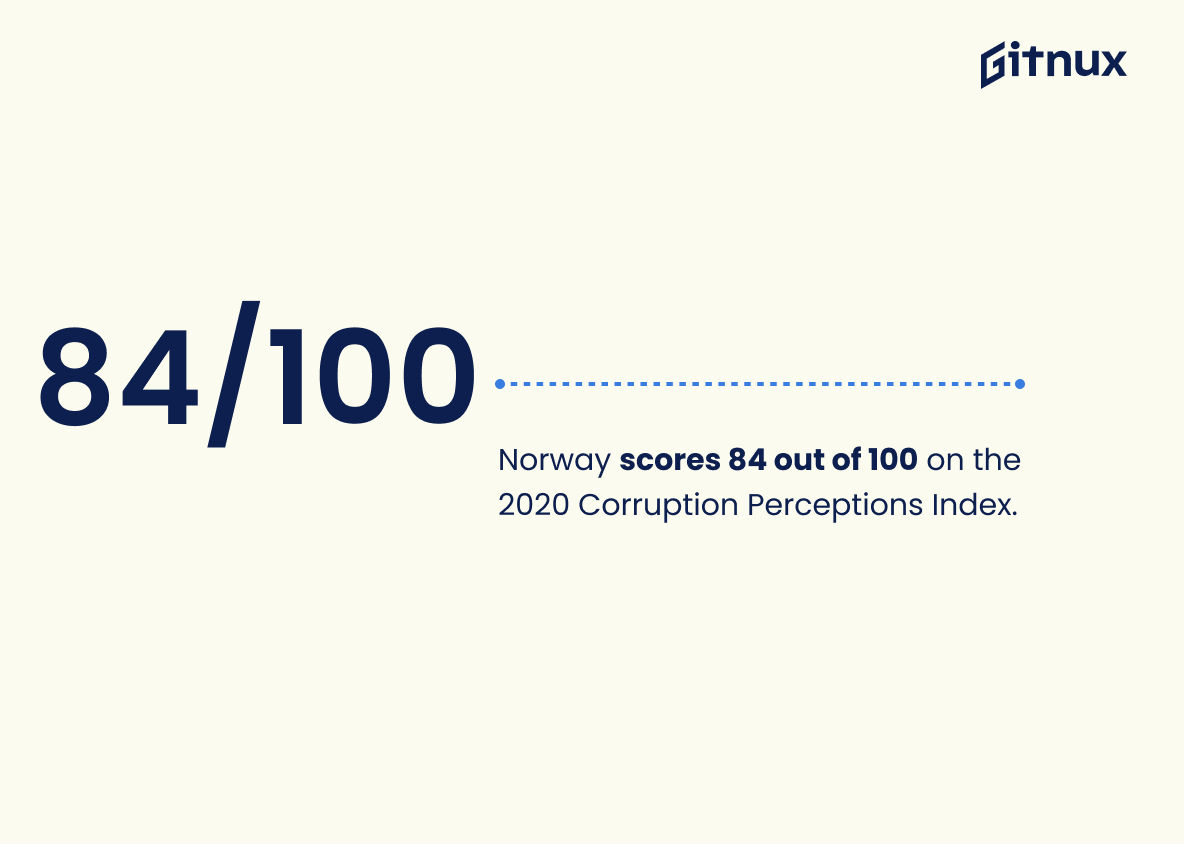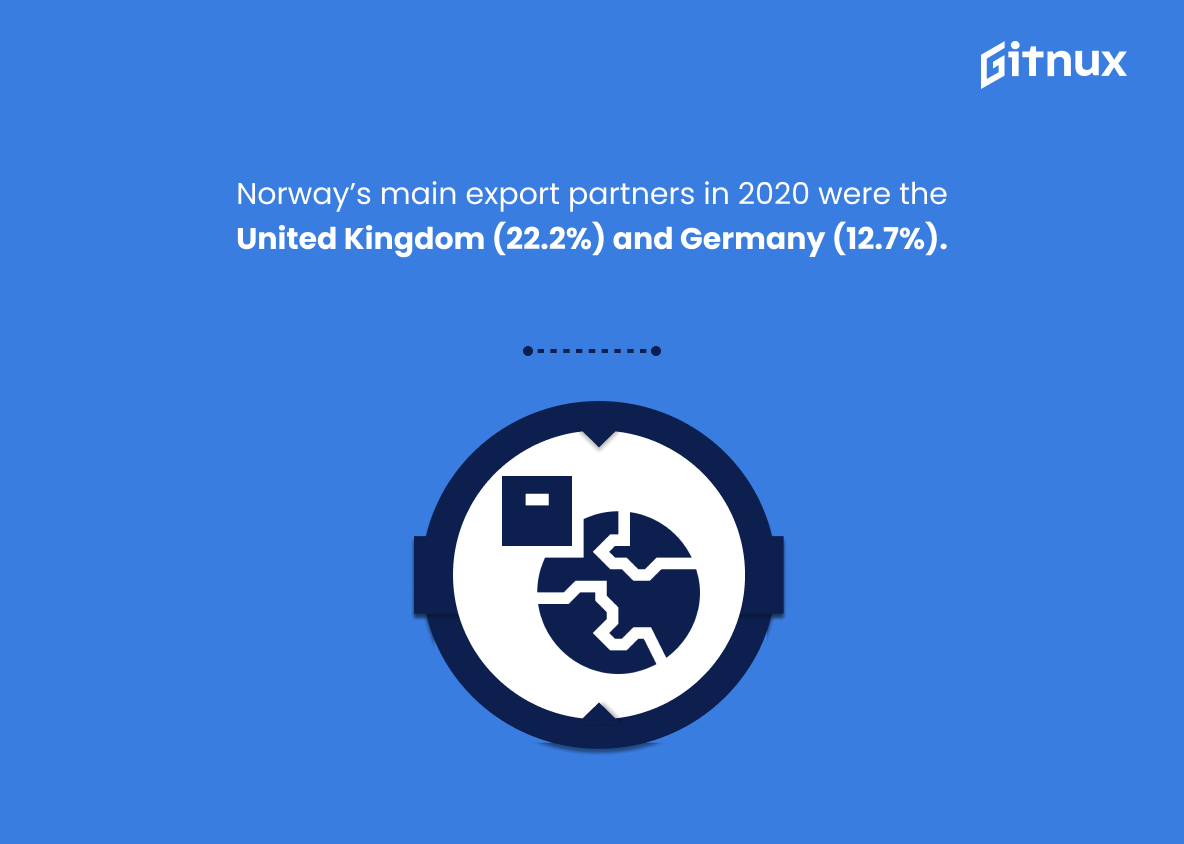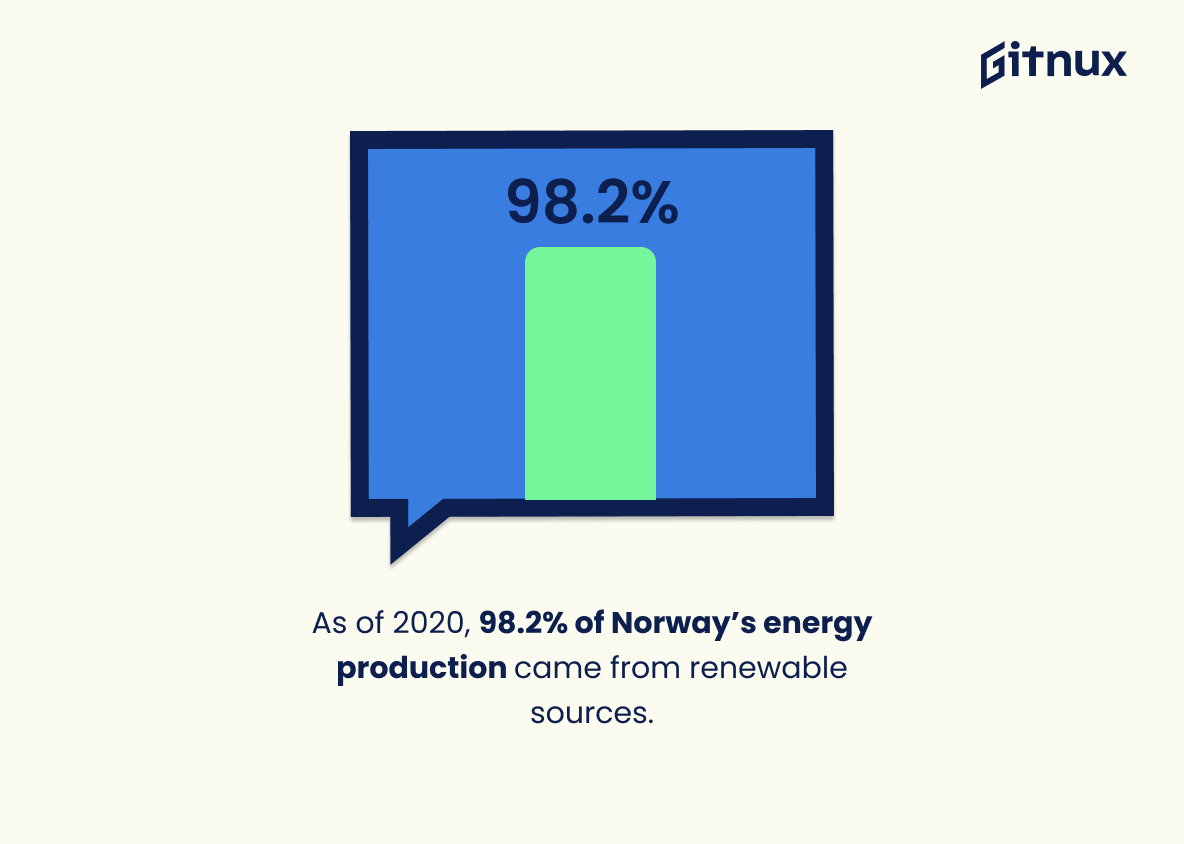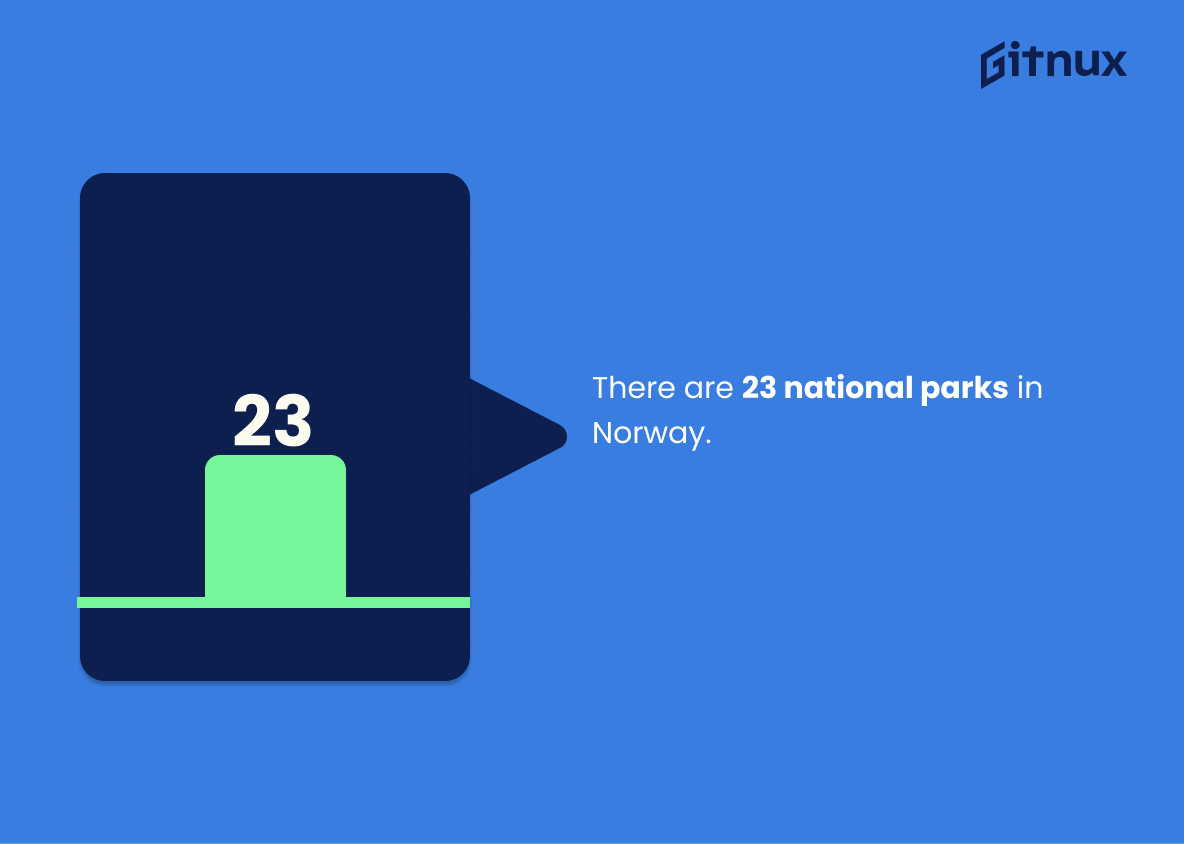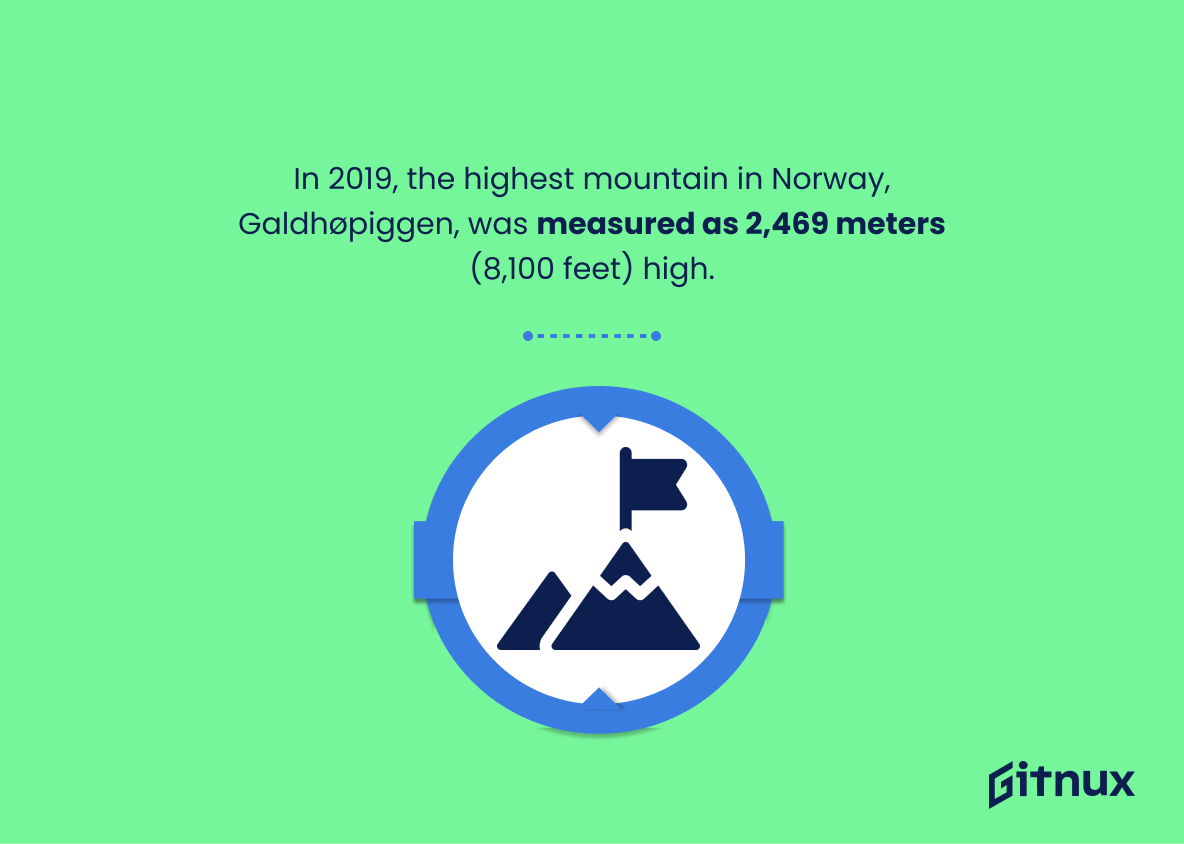Norway is a beautiful and diverse country with many impressive statistics. From its ranking as the world’s most press-free nation to its high Human Development Index score, Norway has much to be proud of. This blog post will explore 20 interesting facts about Norway, including population size, GDP figures, life expectancy rates, language spoken in the country and more. We’ll also look at some of Norway’s key economic indicators such as exports partners and energy production sources. Finally we’ll take a closer look at some geographical features like mountain heights and national parks that make this Scandinavian nation so unique.
This statistic is a testament to Norway’s commitment to upholding freedom of expression and press. It speaks to the country’s dedication to protecting the rights of its citizens to access and share information without fear of censorship or retribution. This is an important factor in maintaining a healthy democracy and is a key indicator of Norway’s commitment to its citizens’ rights.
Norway has a population of approximately 5.4 million people as of 2021.
This statistic is an important indicator of the size and scope of Norway’s population. It provides a snapshot of the country’s population size and growth rate, which can be used to inform decisions about public policy, economic development, and other important matters. Additionally, it can be used to compare Norway’s population size to other countries, providing a useful tool for understanding the country’s place in the world.
Norway Statistics Overview
The Gross Domestic Product (GDP) for Norway in 2020 was $328.78 billion.
This statistic is a testament to the economic success of Norway in 2020. It highlights the country’s impressive ability to generate wealth and prosperity, even in the midst of a global pandemic. It is a key indicator of the country’s overall economic health and provides insight into the strength of its economy. This statistic is an important part of understanding the overall picture of Norway’s economic performance and is essential for any discussion of Norway’s statistics.
In 2020, Norway ranked 2nd worldwide in the Human Development Index with a score of 0.957.
This statistic is a testament to Norway’s commitment to human development and progress. It speaks to the country’s dedication to providing its citizens with the resources and opportunities necessary to lead healthy, prosperous lives. This impressive ranking is a reflection of Norway’s commitment to creating a society that values and supports its citizens.
Norway has a life expectancy of 83 years as of 2021.
The life expectancy of 83 years in Norway is a testament to the country’s commitment to providing its citizens with a high quality of life. It speaks to the nation’s dedication to providing its citizens with access to quality healthcare, education, and other resources that contribute to a longer and healthier life. This statistic is a reflection of the country’s success in creating a safe and prosperous environment for its citizens.
The total length of Norway’s coastline is approximately 58,133 kilometers.
This statistic is a testament to Norway’s vast and varied coastline, which is a major part of the country’s identity. It speaks to the beauty of Norway’s natural landscape, and the importance of its maritime industry. It also highlights the importance of Norway’s maritime resources, which are essential to its economy and culture.
The official language of Norway is Norwegian.
Knowing the official language of Norway is essential for understanding the culture and people of the country. It is a key factor in understanding the nuances of the Norwegian language, which can be difficult to learn for those who are not native speakers. Additionally, it is important to recognize the language of the country when discussing Norwegian statistics, as it can provide insight into the population’s preferences and habits.
Gender Equality – Norway ranked 2nd in the 2021 Global Gender Gap Index.
This statistic is a testament to Norway’s commitment to gender equality, highlighting the country’s dedication to creating a more equitable society. It is a powerful reminder that Norway is a leader in the global effort to bridge the gender gap and create a more inclusive world. This is an important statistic to consider when discussing Norway’s overall progress and development.
Norway has a total area of 148,729 square miles (385,207 square kilometers).
The size of Norway is an important statistic to consider when discussing the country’s overall makeup. Knowing the total area of the country gives us an idea of the scope of the land, and how much of it is available for development, agriculture, and other activities. It also helps us understand the population density of the country, and how much of the land is used for different purposes. Knowing the size of Norway is essential to understanding the country’s geography, economy, and culture.
98.5% of the Norwegian population aged 15 and over are literate.
This statistic is a testament to Norway’s commitment to education and literacy. It speaks to the country’s dedication to providing its citizens with the tools and resources they need to succeed. It also highlights the importance of education in Norway, as it is a key factor in the country’s economic and social development. Furthermore, it demonstrates the value that Norwegians place on knowledge and learning, which is essential for a thriving society.
As of 2019, the GDP per capita in Norway was $75,428.
GDP per capita is an important indicator of the economic health of a country, and in the case of Norway, it is clear that the nation is doing well. This statistic speaks to the overall wealth of the nation, and the fact that the citizens of Norway have access to a high standard of living. This is an important factor to consider when discussing the overall quality of life in Norway, and it is a statistic that should not be overlooked.
Norway scores 84 out of 100 on the 2020 Corruption Perceptions Index.
The Corruption Perceptions Index score of 84 out of 100 for Norway is a testament to the country’s commitment to transparency and accountability. This score reflects the nation’s dedication to upholding ethical standards and ensuring that its citizens are not subject to corrupt practices. This is an important statistic to consider when discussing Norway’s overall success, as it demonstrates the country’s commitment to good governance and its ability to maintain a high level of integrity.
The unemployment rate in Norway in 2020 was 4.0%.
The unemployment rate in Norway in 2020 serves as a testament to the country’s economic stability and resilience. It is a reflection of the country’s commitment to providing its citizens with the resources and opportunities they need to succeed. This statistic is a reminder of the importance of investing in the workforce and creating an environment that encourages growth and prosperity.
Norway’s main export partners in 2020 were the United Kingdom (22.2%) and Germany (12.7%).
This statistic is a telling indication of Norway’s economic ties with the rest of the world. It reveals that the UK and Germany are the two countries that Norway relies on the most for its exports, highlighting the importance of these two countries to Norway’s economy. Furthermore, it provides insight into the global economic landscape, showing the strength of the UK and Germany’s economies in comparison to other countries.
Norway produced approximately 1.6 million barrels of oil per day in 2020.
The fact that Norway produced approximately 1.6 million barrels of oil per day in 2020 is a testament to the country’s economic strength and stability. This statistic is indicative of Norway’s ability to remain a major player in the global oil market, and its ability to generate significant revenue from its oil production. This revenue can be used to fund public services, infrastructure, and other investments that benefit the country’s citizens. Furthermore, this statistic is a reminder of Norway’s commitment to environmental sustainability, as the country has taken steps to reduce its carbon footprint and promote renewable energy sources.
As of 2020, 98.2% of Norway’s energy production came from renewable sources.
This statistic is a testament to Norway’s commitment to sustainability and environmental protection. It highlights the country’s dedication to renewable energy sources, which is a major step towards reducing the global carbon footprint. This statistic is a powerful reminder of the importance of investing in renewable energy sources and the positive impact it can have on the environment.
In 2019, Norway had an internet penetration rate of approximately 97.6%.
The high internet penetration rate of 97.6% in Norway in 2019 is indicative of the country’s commitment to digital advancement. This statistic speaks to the fact that Norway is a leader in the digital space, providing its citizens with access to the latest technologies and the ability to stay connected with the world. This is an important factor for any country, as it allows for greater economic growth and development, as well as improved access to education and healthcare. Furthermore, this statistic is also important for businesses looking to expand into Norway, as it provides them with a reliable and secure digital infrastructure.
There are 23 national parks in Norway.
This statistic is a testament to Norway’s commitment to preserving its natural beauty. It speaks to the country’s dedication to protecting its environment and providing its citizens with access to outdoor recreation. It also serves as a reminder of the importance of conservation and the need to protect our planet’s resources.
In 2019, the highest mountain in Norway, Galdhøpiggen, was measured as 2,469 meters (8,100 feet) high.
This statistic is a testament to the grandeur of Norway’s natural beauty. Galdhøpiggen is the highest peak in the country, and its impressive height of 8,100 feet is a reminder of the majestic landscapes that Norway has to offer. It is a reminder of the country’s stunning beauty and a source of pride for Norwegians.
Conclusion
Norway is a country with many impressive statistics. It ranks 1st in the 2020 World Press Freedom Index, has an estimated population of 5.4 million people as of 2021, and its Gross Domestic Product (GDP) for 2020 was $328.78 billion. Norway also ranked 2nd worldwide in the Human Development Index with a score of 0.957 and had a life expectancy of 83 years as of 2021. The total length of Norway’s coastline is approximately 58,133 kilometers and Norwegian is the official language spoken there; it also scored highly on gender equality ranking 2nd in the 2021 Global Gender Gap Index report with a score 84 out 100 on Transparency International’s Corruption Perceptions index for 2020 . With an area size 148,729 square miles (385,207 square kilometers), 98% literacy rate among adults aged 15+, GDP per capita at $75 428 , unemployment rate 4%, main export partners being United Kingdom (22%) & Germany(12%), energy production from renewable sources accounting to 98 % , internet penetration 97 % & 23 national parks – Norway offers much more than just stunning landscapes.
References
0. – https://www.transparency.org
1. – https://www.eia.gov
2. – https://www.iea.org
3. – https://www.worldometers.info
4. – https://www.visitnorway.com
5. – https://www.rsf.org
6. – https://www.reports.weforum.org
7. – https://www.hdr.undp.org
8. – https://www.statista.com
9. – https://www.atlas.media.mit.edu
10. – https://www.data.worldbank.org
11. – https://www.internetworldstats.com
12. – https://www.nordicvisitor.com
13. – https://www.cia.gov
14. – https://www.worldbank.org
